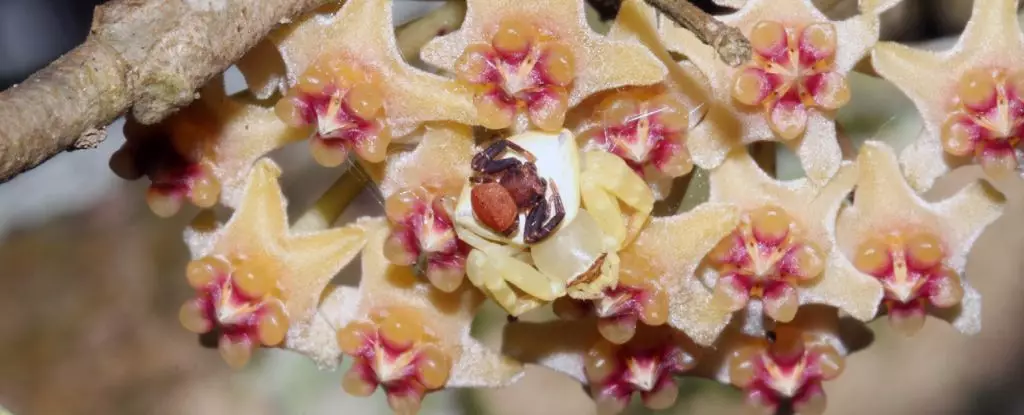Survival in the wild often depends on the ability to blend into the surroundings in order to avoid predators. Many creatures have developed unique camouflage techniques to increase their chances of survival. One such example is the masked crab spider, which has been found to demonstrate cooperative mimicry in the rainforests of China. This behavior, observed by environmental scientists Shi-Mao Wu and Jiang-Yun Gao, sheds light on the fascinating world of animal camouflage.
The masked crab spider, scientifically known as Thomisus guangxicus, is a species of colorful arachnid that employs camouflage as a defense mechanism. These spiders are not dangerous to humans and are known for their ability to blend into their environments by resembling leaves or petals. They are ambush predators, relying on their camouflage to surprise and capture prey as it passes by. Crab spiders, named for their crab-like appearance due to their elongated front legs, exhibit sexual dimorphism, with males being significantly smaller and differently colored than females.
During their research in the rainforests of Yunnan, Wu and Gao observed a male and female masked crab spider working together to mimic a flower. The male spider positioned itself on the back of the larger female spider, creating a visual illusion that resembled the pistils and stamens of a flower. Meanwhile, the female spider mimicked the corolla of the flower, completing the disguise. This cooperative mimicry was described by the researchers as a unique case, potentially the first documented example of such behavior in the wild.
Despite the intriguing discovery of cooperative camouflage in masked crab spiders, there are still unanswered questions surrounding this behavior. It is uncertain whether the stacked spiders were engaging in mating behavior or simply coincidentally positioned. Further observation of this species and other crab spiders with sexual dimorphism is needed to determine if cooperative mimicry is a consistent strategy. Wu and Gao suggest that molecular analysis could provide insights into the co-evolution of the spiders and their plant hosts, offering clues about the origins of this fascinating behavior.
The cooperative camouflage of the masked crab spider presents a unique glimpse into the intricate world of animal adaptations and survival strategies. By working together to mimic a flower, these spiders demonstrate a sophisticated level of camouflage that challenges our understanding of animal behavior. Continued research and observation will be essential in unraveling the mysteries of cooperative mimicry and its significance in the natural world.


Leave a Reply